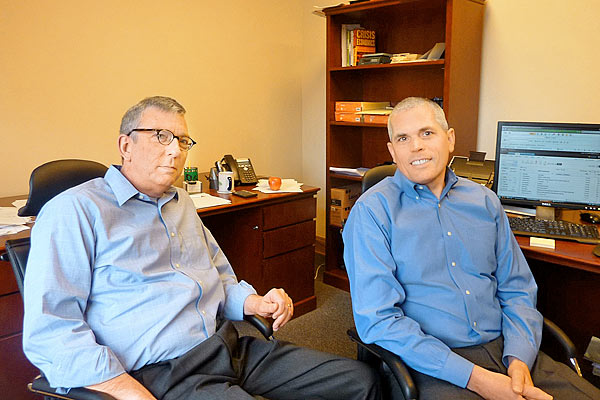
Steve Peterson (left) and Jorge Newbery
Momentum is gathering behind the idea of converting large numbers of empty foreclosed homes into rentals. The Tribune reported last week that Chicago is selling entire condo buildings to apartment developers. And Ben Bernanke, chairman of the Federal Reserve, wrote that large-scale foreclosure-to-rental programs would help heal the housing sector—a concept that is reportedly central to a plan being developed by the Obama administration.
Meanwhile, a Chicago-based investment fund wants to prevent foreclosures from going vacant in the first place. It wants to acquire those properties and then rent them back to the foreclosed former homeowners at a deep discount. Jorge Newbery and Steve Peterson run American Homeowner Preservation (AHP), a vehicle for investors who see both “a financial opportunity and a social mission in the [foreclosure] mess in this country,” Peterson says.
From lenders, AHP buys a pool of distressed loans in low-income neighborhoods around the country. It then approaches the homes’ residents “to ask what they want to do, and to help them do it,” Newbery says. While some want to short-sell and move on, Newbery says that most want to stay if they can at a more manageable payment.
Having paid as little as 20 percent of the loan’s book value, AHP can afford to reset the loans to less than half the value and still turn a profit for its investors. Lenders sell to AHP to save the future costs of legal work during foreclosure, maintenance when the house goes vacant, and marketing it for resale.
After a sudden job loss, a Waukegan family of five couldn’t afford the $1,500 monthly payment on their $130,000 mortgage. Irma Smith says she tried for about a year to get a loan modification from her bank, but “they didn’t want to talk about it.”
When the home was in foreclosure and eviction imminent, Smith got a postcard saying that AHP had bought her mortgage and wanted to help her stay in the house. Within about two weeks, Smith began renting the house from AHP for $709 a month. “It was a blessing and a relief,” says Smith, who also has the opportunity to buy her house back for $43,556.
After often-fractious dealings with their lenders, residents find that “we’re looking for consensual solutions, not adversarial ones like foreclosure, bankruptcy, and eviction,” Peterson says. The process begins with determining what the family can pay, followed by attempts to make those numbers work.
Funding for the loan workouts comes from investors, both institutions and individuals (those whose high assets and investing experience classify them as accredited investors). That’s in AHP’s current incarnation as a for-profit investment fund. It began in Ohio in 2007 as a not-for-profit, founded by Newbery, a former real-estate broker and developer. On behalf of individual homeowners who were in trouble, he approached their banks asking to buy the soon-to-fail loans at a discount. The success rate was about 15 percent, he says, which was “not sustainable.” He later partnered with Peterson, a Chicagoan and retired manager of tax-exempt bond portfolios who wanted to play a role in restoring the soundness of low-income communities. The new model reverses the process; AHP now buys broken loans from banks and then goes to the borrowers to offer a repair.
With about 100 homes purchased and turned around, AHP wants to scale up. To do it, Peterson says, they are looking for investors who want their money “to perform financially and help, in a small way, to repair the social fabric.”


